Photographer Nikolas Ventourakis plays with the need for stories to be conclusive, aiming his work to allow for bias and misinterpretation.
My practice is situated on the boundary between between art and documentation, in an attempt to interrogate the status of the photographic image.
Featured image: Installation View of The Banality of the Avant-Garde in group show Constructing Worlds, Benaki Museum, Athens, Greece, 2018.
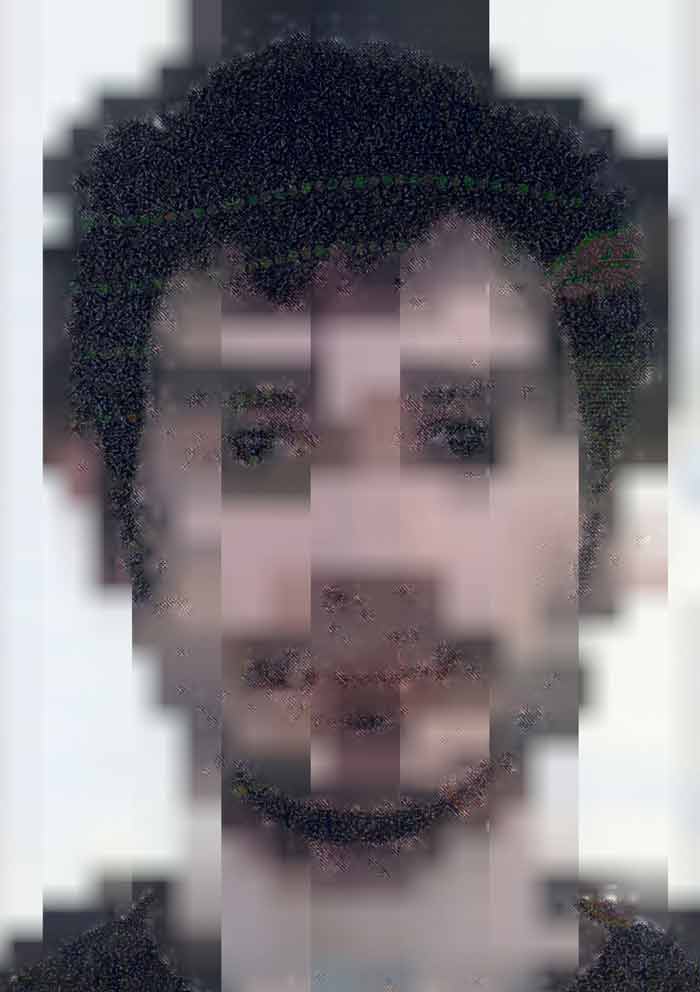
Systematic Portrait 5.a, 2016. Material : C-Type Print – Matte Mounted and Framed (Archival) Paper size : 95 x 70 cm Image size : 82,80 x 58,62 cm Edition of 5 + 2AP (Plus: Size 190cm x 140cm Edition of 1+1AP)
Tell us about your own personal evolution, vis a vis your journey with art and the work that you do today.
From a very young age I found myself to be very interested in images. I read and collected comic books, stamps, illustrated books and watched as much films and animation as I could. I was always curious, and tried to find out how everything was made. Nevertheless, I never thought I would end up with a career as an artist. I had a good grasp of natural sciences at school and I always believed that I would become an architect. My father was an architect, and I grew up surrounded by engineers and designers. Without going into too much detail, life through a series of unplanned situations led me to study art (with a focus on the photographic medium) and I realised that I was much more attuned towards the 2D media than the spatial ones that would be the focus of architecture.
Furthermore, one of the issues I’ve always struggled with was that I become very interested in completely distinct and somewhat unrelated subjects. When I was an undergraduate I could be fascinated by someone’s study of the colour blue, but I would spent an equal amount of time attending discussions about politics. As an artist I am able to work on many different subjects, even though that makes my praxis a bit less recognisable as a whole – it is missing an apparent stye or signature on the surface, as my tools and ways of making art transform depending on the subject or my mood.

Voyageur, Nikolas Ventourakis and Sarah Fortais, Centre Pompidou Hors Pistes 14 2019. Multidisciplinary Installation and Performance “Training 5” 2019 C-type Print, mounted on aluminium, 50 x 50cm.
Central to my visual work is an invitation to embrace ambiguous imagery, where the photographic is not yet real, and the familiar is a projection of a mix of memory – stemming from both private and media experiences – with abstract thinking.
What inspires you? Let’s talk about your frameworks, references and process.
My practice is situated on the boundary between between art and documentation, in an attempt to interrogate the status of the photographic image. This quest is unfolding during a digital revolution, when the blurring of the line between producer and viewer has reset previous critical discourses. Central to my visual work is an invitation to embrace ambiguous imagery, where the photographic is not yet real, and the familiar is a projection of a mix of memory – stemming from both private and media experiences – with abstract thinking. I am fascinated with (and play with) our need for stories to be conclusive. This is why I aim for my work to allow for bias and misinterpretation. Whatever the context; a gallery, a page or a computer screen, my artworks seem to have no unanimous foundation, leaving every viewer on their own to fill in the blanks.

The Banality of the Avant-Garde Singles 0#159, 2018, C-Type Print, Matte, Mounted on Dibond, Framed, 120 x 150 cm, Edition of 3 + 2 AP – 2014, C-Type Print, Matte, Unframed, 81 x 101 cm, Edition of 5 + 2 AP
How do you deal with the conceptual difficulty and uncertainty of creating new work?
Dealing with uncertainty is the absolute hardest element in making work. Basically, I find myself questioning my decisions or even my non-decisions at every step. From research and testing all the way to the exhibition of the artworks. One question always appears at some point: Why on earth should I be doing what I’m doing, and who would be interested in it? Why would anyone spend ten seconds to see my artworks?
There are so many uncertainties. These days even more. The year started with the quarantine, then the Black Lives Matter situation erupted in a grander scale than in the recent past. I’m a straight, white male, and find myself asking what is the point of me presenting my works to the world, why should I produce more? I don’t have the answers, but the creation of new work became that much harder than it already was with that extra layer of reality on top. My only repose is in the fact that I aim to be honest in the work that I produce, and that I am not afraid to fail.

Installation View of Systematic Portraits in group show LATENT at Matèria Gallery, Rome, Italy, 2016.
What were you working on when the lockdown was announced?
I was preparing for the production of a commission for the 3rd Industrial Biennale in Croatia, which was originally planned to take place in July this year.
At the same time I was ramping up the research and planning for a new series of artworks that I wanted to make in Athens, focusing on the urban landscape and the apartment blocks as well as a video piece.

Voyageur, Nikolas Ventourakis and Sarah Fortais, Centre Pompidou Hors Pistes 14, 2019. Multidisciplinary Installation and Performance Performance : Mission Day 1
How has this affected your practice and plans?
I actually stopped producing for a while. I needed time to assess the situation and felt that it was not possible for me to create. Found myself loosing interest in the subjects that I was focusing on just before the lockdown, and even now that things are slowly opening up, I can’t say that I’ll go back to them.
Regarding plans, most of everything that I was involved with got canceled or postponed. And making plans is next to impossible. I’ve decided to not make plans for the first time in my life- adopt a one day at a time kind of mentality. To my friends and colleagues, I’m infamous for planning months and years in advance. They truly don’t or can’t believe me when I tell them that I remain without a concrete schedule, and that this is a conscious decision on my part!
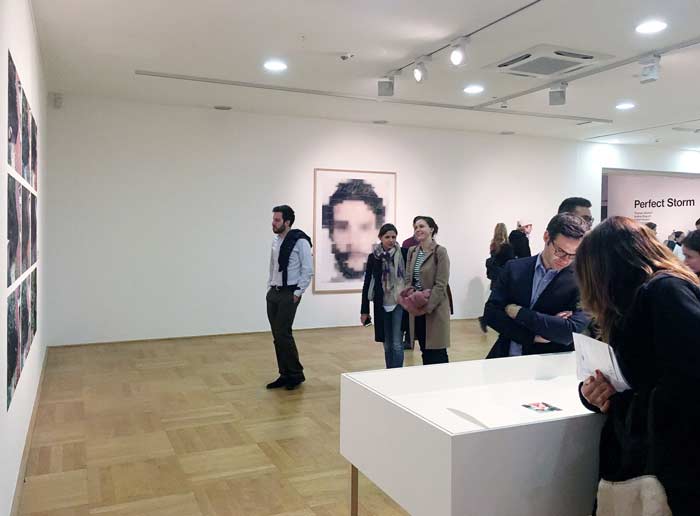
Installation View of Systematic Portraits in group show “Perfect Storm” in NRW Forum, Düsseldorf, Germany, 2017.
What would elevate artists’ life during this period?
Certainly the establishment of a Union for Artists if one does not exist, as is the case in Greece. It is important as a cultural worker to have representation in the same way that other professions have.
What kind of critical inputs does the art world need at this moment to overcome the loss of income and opportunity as a direct result of the lock-downs worldwide?
Both the private and the public sectors must realise that artists are very vulnerable to extreme situations like the one that we are living through now. Therefore, previous norms have to be left to the side for a while. The upper echelons of the art world, can survive by reducing overheads and extravagance for a period of time, while making sure that they do not make their people unemployed. The collectors, the institutions, should understand that at this time, many small acquisitions are more important for the overall health of the industry, rather than the support towards the established names.
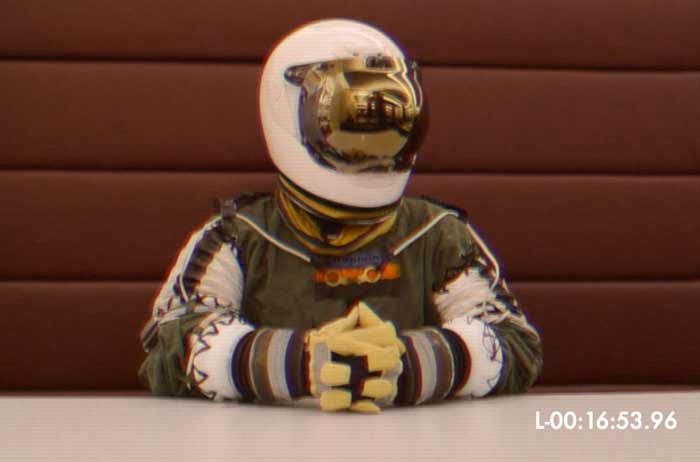
Voyageur Nikolas Ventourakis and Sarah Fortais, Centre Pompidou Hors Pistes 14 2019 Multidisciplinary Installation and Performance (still frame) Pre-Flight Press Conference 2019 HD Video, Stereo Sound 19’
How does your interaction with a curator or gallery evolve from the initial interface, to the working-involvement/relationship?
It is a very long term relationship. It has to work for all parties involved and to be honest it reminds me very much of flirting. The curator must deeply understand the work and the intentions of the artist, and the artist must be prepared to accept input. This can only happen if the goals are aligned. One must reach that point where the concept, the monetary value, the cultural capital created by an artwork can be discussed openly, rigorously and everyone is focusing in realising the same outcome. So the relationship must reach that point where there is safety in being candid, but also challenging.
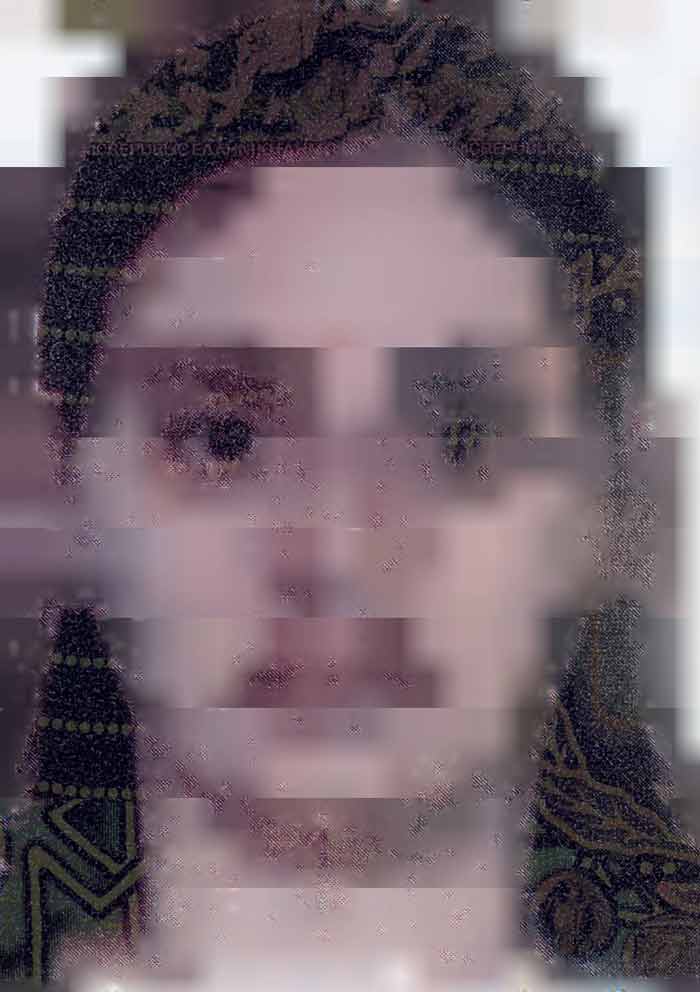
Systematic Portrait 6.a, 2016. Material : C-Type Print – Matte Mounted and Framed (Archival) Paper size : 95 x 70 cm
Image size : 82,80 x 58,62 cm. Edition of 5 + 2AP (Plus: Size 190cm x 140cm Edition of 1+1AP)
What are you looking for while reviewing art for your own collection? Which shows, performances and experiences have shaped your own creative process?
I love collecting art created by friends of mine. The intimacy of the relationship somehow trickles in the artworks themselves. I tend to exhibit rather big prints and my studio is full of large frames. Therefore, most of the time, I prefer to collect smaller artworks. And I am impartial to prints – photographic or otherwise. I don’t own any sculptural pieces.
As for the experiences that shaped me as an artist, I believe it has to be me growing up in Greece in the 80’s until the mid 00’s. That place where I come from, was back then part of the mental space of the “West” while being in the “East”, part of the EU, surrounded by communist countries, part of something and in direct physical attachment to something else. This duality has inscribed itself in my psyche. And definitely attending art school in Greece, Germany and London (you might notice that I don’t say UK. London is a different beast.) Thus being exposed to similar but also very distinct ways of thinking.
Who are your maestros?
I don’t really have what you might call maestros, I admire and get inspired by many artists. That said, none of them are crucial and central to my being. However, I do pay very close attention to my colleagues and the work that they produce is the one that I am most interested in: Sina Michalskaja, Paul Hutchinson, Stelios Kallinikou, Antonis Theodoridis, Fotis Milionis, Maria Mavropoulou and many others.
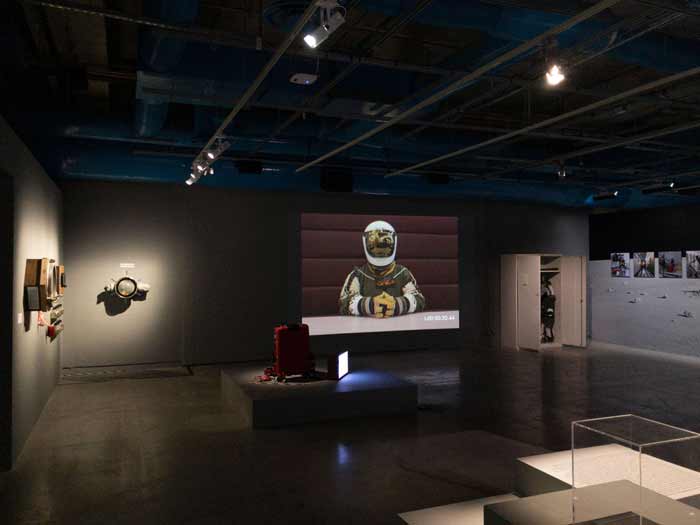
Voyageur, Nikolas Ventourakis and Sarah Fortais, Centre Pompidou Hors Pistes 14, 2019. Multidisciplinary Installation and Performance Installation View.
You have spent a lot of time amongst artists in flow. Tell us your observations.
I would make only one observation: We are constantly in flow, until we aren’t…
What were your biggest learning and hiccups along the way in your artistic journey? (Career anecdote)
Definitely my biggest mistake was trying to please my professors during my undergrad. I spent two years trying to perfect a thesis that I was not interested in at all, working with the wrong professor, aiming to amaze an audience that was not at all compatible with my way of thinking. One morning after a digital catastrophe which destroyed most of the work that had been done up to that point, I had to face the terrifying prospect of having to work on that subject from the beginning. It was too much and I made the right choice to change professors and focus my energy on something that my heart was in. I still regret spending all that time, but at least I know now when to stop pursuing a dead end.
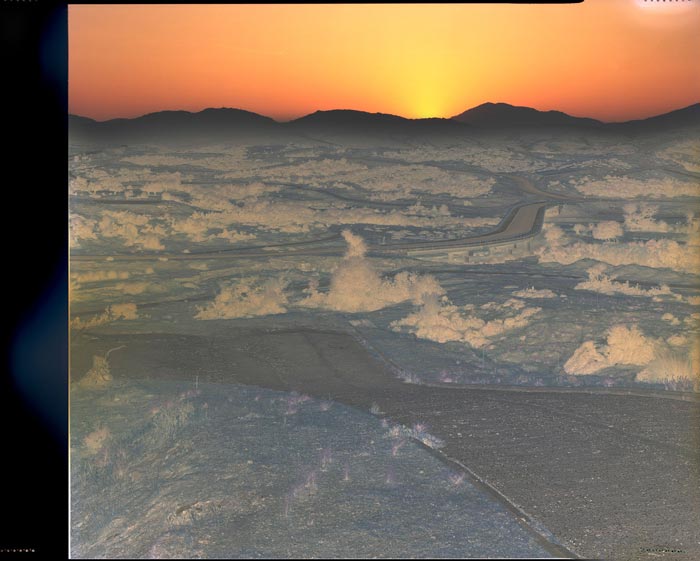
The Banality of the Avant-Garde 0#160, 2018, C-Type Print, Glossy, Mounted on Dibond, Framed, 120 x 150 cm, Edition of 3 + 2 AP
How do you balance the contradicting elements of your work?
This is a subject that we discuss often with my colleagues and friends. It’s very difficult to separate the personal from the professional. My life appears in my work, and while I live I end up making work. My vacation is never free of keeping notes and to be honest almost half of my projects have been realised while being on the road with my ex-partner, during our ‘holidays’. Sometimes it worked fine, at other times it was too much of a burden. It’s almost impossible, however, to ‘switch-off’ your brain. At least for me. It’s very hard for example, for me to take a picture at a party and pretend to myself that I’m not thinking that this could be part of something I’m working on.

Systematic Portrait 3.a, 2016. Material : C-Type Print – Matte Mounted and Framed (Archival) Paper size : 95 x 70 cm. Image size : 82,80 x 58,62 cm. Edition of 5 + 2AP (Plus: Size 190cm x 140cm Edition of 1+1AP)
How do you strike a balance between the contradicting motivations: commercial v/s creative?
I refuse to work with people that have clear political agendas which are opposite to my beliefs. There is a lot of grey there, but I try not to be a complete sell out at least. I would say that I’m 14% successful on that front. There are moments when I come face to face with the fact that the system I’m part of most of the time perpetuates the inequalities that I abhor and I despair. I do believe that art can be political and that it’s a very powerful tool towards social change. Sometimes. I also believe that one has to be an active citizen and political being outside the art bubble.
Tell us about your studio, what kind of place is it? Could you describe your usual work-day in the studio?
I recently moved my studio from London to Athens, due to the Brexit situation there. It used to be in my apartment, but now I share a space with a boutique publishing house, VOID. The space includes a gallery, where we organise and curate shows. This is on the ground floor. My work space is on the first floor, where my archive is stored. When I’m not actively making new images, I tend to work late. I would come to the studio around 16.00 and leave around midnight, or if it’s a hyperactive period, around 04.00 or 05.00 in the morning. I’m definitely a night person. Most of the time I would work on prints and portfolios when I’m in. Or I would do research – reading and cataloging information.

Installation View of The Banality of the Avant-Garde in group show Constructing Worlds, Benaki Museum, Athens, Greece, 2018.
How many works do you make in a year? How many would you like to be making?
This is not a constant number. But I would say that I end up making anything between 10-30. In 2019 and 2020 I’ve made around 25 in total.
How are you balancing life and work at home during this period?
I’m only dealing with the ‘bureaucratic’ side of work. Replying to emails about funding, postponements, insurance. Things that never stop, even during a pandemic. Otherwise, I did not create any new work. I’m only now starting to work on new projects again.
For enquiries contact: studio [at] ventourakis [dot] com
Before you go – you might like to browse our Artist Interviews. Interviews of artists and outliers on how to be an artist. Contemporary artists on the source of their creative inspiration.








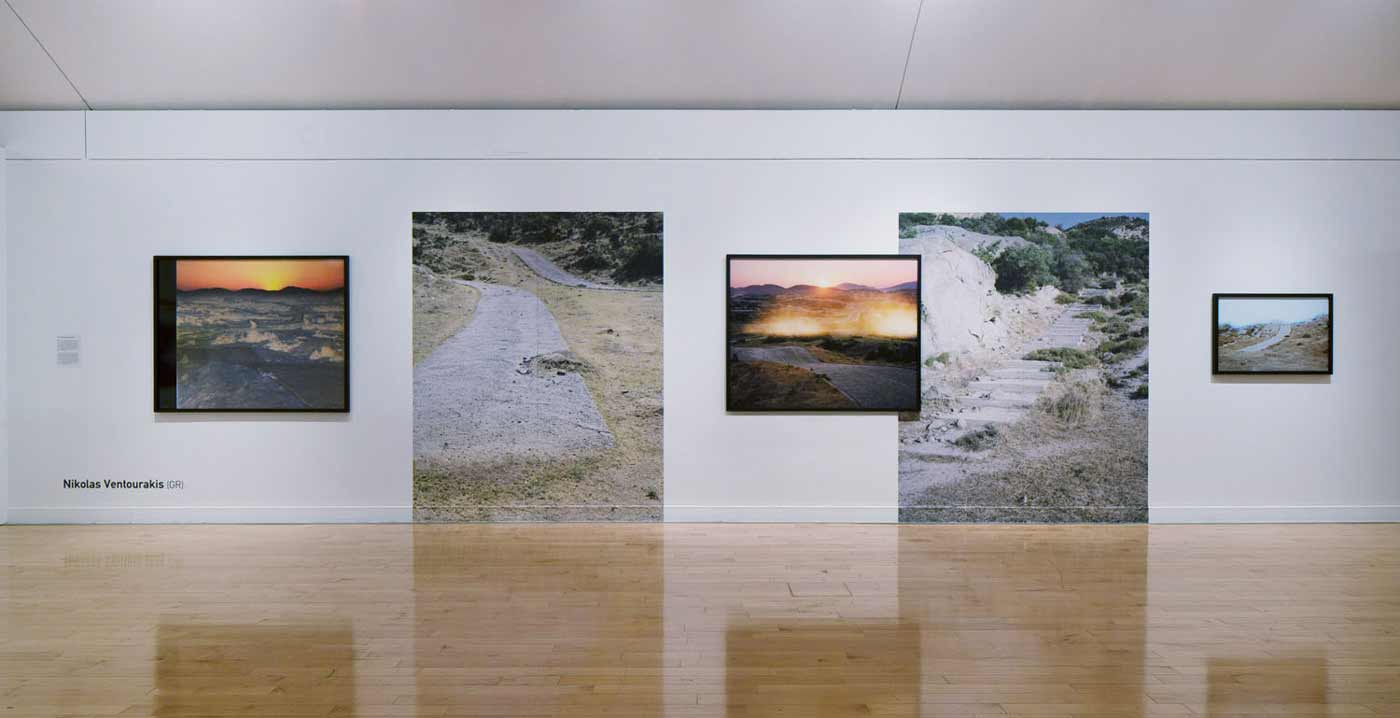



Add Comment